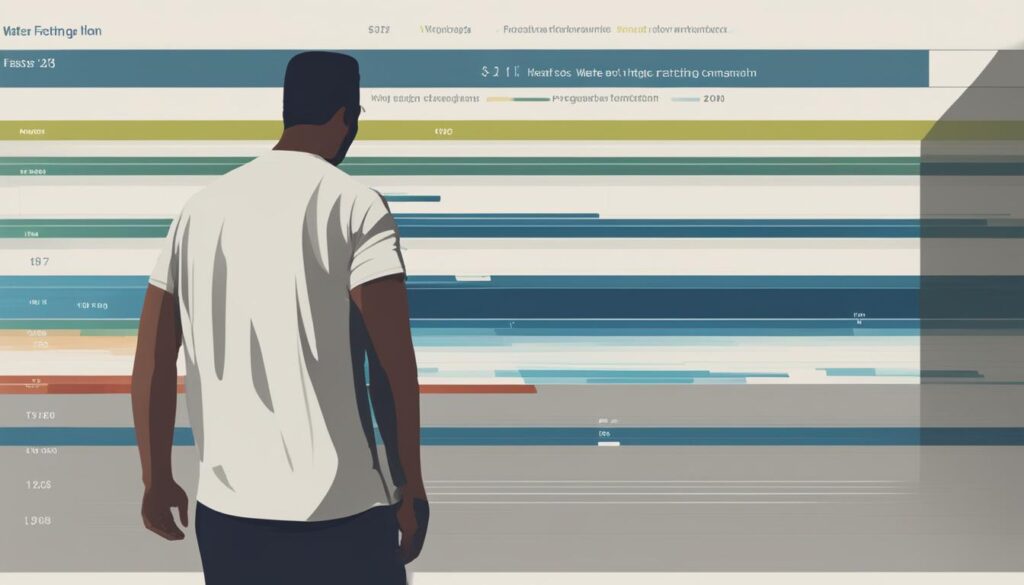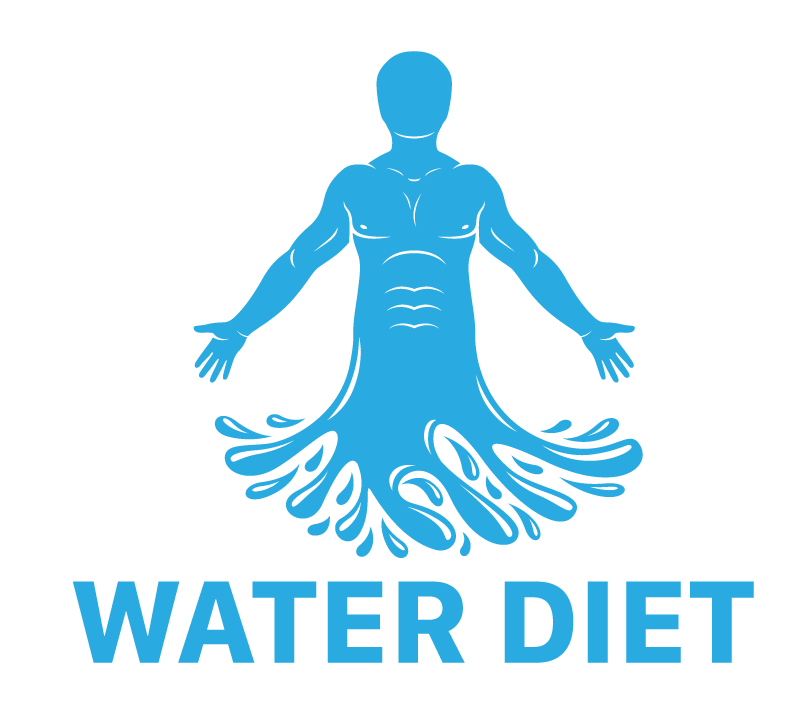The quest for a healthier lifestyle and shedding unwanted pounds can often lead to a weight loss journey fraught with excitement, successes, but also unforeseen obstacles. Among these is the infamous weight loss plateau, a point at which weight seems immune to efforts, unmoving like a stubborn boulder blocking one’s path. It’s here that strategies like water fasting enter the limelight, offering a beacon of hope for those seeking to resume their progress.
For countless individuals, overcoming plateaus with water fasting has become a game-changer. This technique harnesses the body’s intrinsic ability to adapt and renew, potentially unlocking fat reserves as a source of energy. By integrating water fasting tips into one’s regimen and aligning with the body’s natural rhythms, the hurdle of a weight loss plateau can often be surmounted.
Breaking through a weight loss plateau with water fasting involves more than abstinence from food; it encapsulates a holistic approach that includes strategic dietary adjustments, physical activity enhancements, and lifestyle modifications. When done correctly, water fasting doesn’t just expedite weight loss—it also revitalizes the body and mind.
As you embark on this transformative experience, remember that every journey is unique, and while water fasting can be an effective tool, it should be approached thoughtfully, with attention to one’s health and well-being.
Key Takeaways
- Water fasting can serve as a potent remedy for overcoming stubborn weight loss plateaus.
- It’s not just about cutting food; successful fasting integrates overall wellness and strategic nutrition.
- While effective, water fasting should be personalized and aligned with individual health needs.
- Incorporating water fasting tips into one’s routine requires a holistic approach to health.
- Patience and health-conscious practices are essential when using water fasting to triumph over plateaus.
Understanding Weight Loss Plateaus and Water Fasting Benefits
Many on a weight loss journey encounter a point where progress comes to a frustrating standstill—commonly known as an intermittent fasting plateau. This plateau typically transpires after an initial period of weight reduction, despite ongoing diet and exercise efforts. It’s characterized by a significant slowdown in metabolic rates as the body adapts to its new weight, posing challenges to further fat loss. However, employing strategies like water fasting may offer a breakthrough.
Water fasting acts as a metabolic reset button, compelling the body to switch from relying on glucose to tapping into fat stores for energy—a pivotal shift for anyone grappling with weight loss stalls on water fasts. Incorporating various methods to optimize this process not only supports the continuation of weight loss but also invites a broad spectrum of health benefits.
Several effective strategies are pivotal in overcoming these weight reduction hurdles:
- Modifying carbohydrate intake to encourage the body to utilize fat as an energy source,
- Implementing a regular exercise routine that can stimulate a sluggish metabolism,
- Meticulous tracking of dietary intake to ensure a well-balanced nutritional plan,
- Adherence to stress management practices that align with healthy weight loss goals,
- Application of intermittent fasting techniques to maintain body adaptability.
The benefits one might reap from water fasting extend beyond mere weight loss. These can include an enhanced metabolic rate, augmented fat oxidation, and a recalibration of appetite—essential factors to break a weight loss plateau. As one ventures into the realm of water fasting, understanding these facets is indispensable for achieving long-term wellness and weight management goals.
However, diving into water fasting involves preparation and caution. Maintaining balance and coherence with one’s overall health and lifestyle is essential. With a holistic approach and by tailoring the implementation of these strategies to personal needs, water fasting can effectively support individuals through the arduous phase of a weight loss plateau, setting the stage for continued success on their health journey.
Overcoming Plateaus with Water Fasting
When embarking on a fasting journey to shed weight, encountering a plateau can be a common and challenging experience. However, water fasting emerges as a plateau buster for fasting, offering effective strategies to rejuvenate metabolism and resume weight loss. By understanding the dynamics of water fasting and integrating essential tactics, individuals can effectively leverage this approach as a means to overcome plateaus with water fasting.
How Extended Fasting Phases Can Kickstart Metabolism
Extending the duration of fasting phases acts as a catalyst for metabolism, pushing the body to deplete glucose stores and look towards fat reserves for energy. This metabolic shift aids in breaking through the plateau and invites a deeper state of ketosis. The resulting increase in fat oxidation is a significant water fasting benefit for those looking to reignite their weight loss.
Strategies for Increasing NEAT During a Water Fast
A key tactic in overcoming weight stagnation involves the emphasis on increasing NEAT—non-exercise activity thermogenesis. By incorporating more movement throughout the day, such as standing, walking, and stretching, one can effectively enhance metabolic rates while on a water fast. This approach serves to counteract the metabolic slowdown often encountered during weight loss plateaus, providing an indirect yet potent means of caloric burn.
The Role of Hydration in Overcoming Weight Stalls
The importance of hydration cannot be understated during a water fast, as proper fluid intake is a cornerstone of the fasting process. Consuming ample water aids in various metabolic functions and can also lead to a reduced appetite. Hydration is thus a pivotal component in not only supporting overall health but also facilitating the body’s ability to overcome weight loss plateaus.
Together, these strategies form a comprehensive approach to tackling the dreaded weight loss halt. With extended fasting, an increase in spontaneous physical activity, and an unwavering focus on hydration, water fasting holds the potential to act as a significant tool for those looking to progress beyond the weight loss standstill.
| NEAT Activity | Description | Benefits During Water Fast |
|---|---|---|
| Standing | Using a standing desk or taking breaks to stand during work | Improves circulation and calorie burning |
| Walking | Incorporating short walks throughout the day | Increases energy expenditure and fat oxidation |
| Stretching | Performing stretching exercises or light yoga | Promotes flexibility and prevents muscle stiffness |
From this perspective, overcoming plateaus with water fasting can seem less daunting. Embracing the right strategies enables individuals to navigate through plateaus with the dual effect of enhancing their well-being and fostering sustainable weight loss.
Designing a Personalized Water Fasting Regimen
Embarking on a water fasting journey presents numerous health opportunities, particularly when it comes to breaking through weight loss plateaus. A personalized fasting plan is instrumental in harnessing the full spectrum of water fasting benefits. To build a regimen that is truly effective and tailored to individual requirements, one must consider personal goals, health background, and the nuances of their daily life.
Beginning with the identification of one’s specific objectives, a water fasting regimen should be calibrated to either jumpstart a new weight loss journey or propel one past a lingering plateau. The nexus between fasting duration and individual lifestyle determines the fasting regime’s sustainability – too long might lead to undue stress, while too short might forfeit potential water fasting benefits.
As a safe practice, transitioning between fasting and regular dietary patterns is crucial – this is not merely a pause in eating but a dynamic process that warrants careful planning. Guiding individuals through this transition phase ensures nutritional needs continue to be met and normal bodily functions are supported. Consideration of the delicate balance between fasting window and nourishment phase therefore matters greatly.
To facilitate the design of a personalized fasting plan, an evaluation of current health status can help avoid unnecessary risks and elevate the potential for success. Here, a well-defined table of considerations is provided to ensure every aspect of the fasting regimen is thoughtfully curated:
| Consideration | Purpose | Personalization Strategy |
|---|---|---|
| Health Assessment | To evaluate fitness for fasting | Consult with healthcare provider for clearance and guidance |
| Fasting Duration | To optimize fat loss and health benefits | Adjust fasting hours based on experience level and health condition |
| Dietary Transition | To maintain nutritional balance | Plan post-fast meals that are nutrient-dense and easy to digest |
| Lifestyle Integration | To ensure adherence and minimize disruptions | Align fasting periods with daily routines and social commitments |
| Progress Monitoring | To track benefits and adapt as necessary | Keep a log of weight trends, energy levels, and overall well-being |
Personalization extends beyond the fasting method itself, branching into the intricacies of life’s daily rhythms. By incorporating individual constraints and preferences into the fasting strategy, an empowering and feasible plan can be developed, one that resonates with the person’s unique circumstances.
Ultimately, a personalized fasting plan crafted with these considerations in mind stands to offer a transformative experience. It merges the desired outcome of weight loss with a deeper conscious engagement in one’s health.

Eloquent, adaptable, and sustainable, a personalized fasting regimen is the keystone of successful water fasting ventures. It ensures that every step taken towards a lighter, healthier self is grounded in safety and efficiency, setting a steady pace towards conquering milestones in one’s weight loss odyssey.
Exercise and Its Impact on Weight Loss Plateaus
Stagnation in weight loss, commonly referred to as a plateau, is a phase feared by many on their journey to better health. It’s the point where it seems no amount of calorie cutting can move the numbers on the scale. Yet, exercise to break weight loss plateau emerges as a powerful tool, offering a multifaceted solution to this complex challenge.
What many don’t realize is that maintaining muscle mass throughout a weight loss journey is quintessential for sustaining a higher metabolic rate, and exercise, in particular a combination of aerobic and resistance training, serves to do just that. Complementing water fasting tips with a structured exercise regimen can create an environment for the body to revitalize its weight loss capabilities.
Engaging in consistent physical activity does not merely preserve muscle; it stimulates various bodily functions that are crucial for continued weight management. From boosting metabolism to enhancing mood, exercise proves to be an indispensable component of any successful weight reduction plan, especially when plateaus hit.

Below is a table illustrating ideal types of exercises to incorporate alongside water fasting tips, ensuring a multifaceted approach to breaking through weight loss plateaus:
| Type of Exercise | Benefits for Overcoming Plateaus |
|---|---|
| Aerobic Exercise | Enhances cardiovascular health, boosts metabolism, and increases calorie burn. |
| Resistance Training | Maintains and builds muscle mass, supporting a higher resting metabolic rate. |
| High-Intensity Interval Training (HIIT) | Provokes EPOC (Excess Post-Exercise Oxygen Consumption), leading to higher calorie burn post-workout. |
| Flexibility Workouts (e.g., Yoga) | Reduces stress levels which may lower cortisol, a hormone that can hinder fat loss when elevated. |
The intricacy of addressing weight loss plateaus calls for a holistic approach where exercise and fasting work cohesively. In essence, physical activity is not a mere addition to the weight loss formula; it is a fundamental aspect that revitalizes and sustains the body’s innate ability to shed weight, especially when combined with strategic water fasting tips.
Embracing exercise as a regular part of one’s routine offers not just a potential breakthrough in weight loss efforts, but also propels one towards improved health and vitality—a reward far beyond the numbers on a scale.
Water Fasting Tips: Preparing for Success
Fasting, as a practice to facilitate weight loss and health improvement, can sometimes lead to a plateau. Overcoming plateaus with water fasting requires a keen understanding of nutritional intake and an awareness of one’s eating habits. To ensure a fruitful fasting experience, it is not enough to simply reduce food intake; one must also be strategic about the nutrients consumed and the manner in which they are eaten.
By tracking nutrient intake and adopting mindful eating during eating windows, individuals can cultivate an environment conducive to weight loss and can move past the stages of stagnation. Here’s how:
Tracking Macronutrient Intake for Optimal Results
During a water fast, the body undergoes significant changes in the way it processes and utilizes nutrients. Tracking nutrient intake becomes crucial in navigating this delicate balance. By closely monitoring the intake of proteins, fats, and carbohydrates, individuals are better equipped to make informed dietary decisions that support their fasting and health goals.
Understanding the proportions of macronutrients consumed can lead to an enhanced ability to adjust one’s diet for optimal results. It’s not merely about eating less but eating right. Adequate nutrition during eating windows is pivotal to maintaining energy levels, preserving muscle mass, and ensuring overall well-being.
| Nutrient | Importance During Fasting | Optimal Intake Strategies |
|---|---|---|
| Protein | Preserves muscle mass and satiety | Focus on lean sources such as fish and legumes |
| Fats | Provides energy and supports cell function | Consume healthy fats like avocados and nuts |
| Carbohydrates | Fuels daily activities and workouts | Choose complex carbs, such as whole grains and vegetables |
Employing Mindful Eating During Eating Windows
Practicing mindful eating during fasting can be a particularly effective technique for those attempting to break through weight loss plateaus. It involves paying close attention to the sensations of hunger and fullness, the flavors, textures, and aromas of food, therefore facilitating a stronger connection between the body and its nutritional needs.
During the eating window, it’s essential to consume foods deliberately and with gratitude. This heightened awareness can lead to more controlled portion sizes and the selection of nutrient-dense foods, ultimately aiding in a successful water fasting experience.
For those looking to refine their fasting practice, incorporating these strategies of tracking nutrient intake and eating mindfully can be transformative. It’s a journey of self-discovery, as much as it is of health improvement, one that prepares individuals for success in their water fasting endeavors.
Nutritional Considerations for Sustainable Water Fasting
To ensure success in water fasting and maintain robust health, it is essential to integrate a range of nutritional strategies for fasting that support the body’s needs. A sustainable approach to water fasting entails not only periods of abstaining from food but also strategically utilizing eating windows to consume a diet rich in vital nutrients. This balance minimizes potential deficiencies and maximizes the health benefits associated with fasting.
Designing a nutrition plan that complements a fasting schedule involves thoughtfully selecting foods that provide high nutritional value without overwhelming calorie contribution. The incorporation of fiber, lean proteins, and healthy fats into meals eaten during non-fasting periods can be particularly beneficial.
Consuming enough fiber is important as it aids in maintaining a healthy digestive system, reduces hunger pangs, and can help stabilize blood sugar levels. Lean proteins contribute to muscle preservation and provide lasting satiety, which is invaluable for extending fasting periods with minimal discomfort. Polyunsaturated fats, particularly omega-3 fatty acids, support heart health and anti-inflammatory pathways, enhancing the overall fasting regimen.
| Nutrient Category | Role in Sustainable Fasting | Examples of Nutrient-Dense Foods |
|---|---|---|
| Fiber | Supports digestive health and satiety | Legumes, berries, chia seeds, leafy greens |
| Lean Proteins | Aids in muscle maintenance and satiety | Chicken breast, tofu, lentils, Greek yogurt |
| Polyunsaturated Fats | Promotes heart health and reduces inflammation | Salmon, walnuts, flaxseeds, avocados |
It becomes clear that the nourishment provided during eating episodes must be meticulously curated to lay a foundation for sustainable water fasting. By placing emphasis on whole foods and diversity in choices, fasters can enrich their diets with a broad spectrum of micronutrients vital for their wellbeing. The harmonious fusion of nutrient timing and selection is the crux of a successful fasting lifestyle.
To reinforce the power of fasting with nutritional wisdom, it is recommended to include a variety of colors on the plate, as each hue typically represents different micronutrients and antioxidants. The diversity of phytonutrients obtained from such a palette does more than meet the eye—it bridges the gap between fasting and feasting, bringing about a comprehensive nutritional synergy.
As fasting continues to gain popularity for its myriad health benefits, it is increasingly paramount to approach it with a sustainable mindset. By respecting both the fasting process and the body’s nutritional demands, practitioners can turn the art of fasting into a lifelong, health-affirming habit. A mindful and educated approach toward the timing and composition of one’s diet underpins the very essence of effective and sustainable water fasting practices.
Conclusion
In the intricate dance of weight management, conquering fasting plateaus is a testament to an individual’s dedication and resilience. The water fasting journey success that many seek is not attained through a static course but through a dynamic rhythm of trial, observation, and adjustment. Patience and persistence become their companions, guiding them through the unpredictability of weight loss.
Acknowledging that setbacks and stalls are part of the process is crucial for those immersed in the practice of water fasting. It is the adaptability to these challenges, coupled with a vigilant response to the body’s feedback, that enables successful navigation past these hurdles. Whether it’s attenuating the intake of certain macronutrients, integrating mindful physical activity, or embracing the ritual of hydration, each strategy is a piece of the puzzle in achieving comprehensive wellness.
Ultimately, it is the awareness and understanding of one’s physiological needs that fortify the path to long-term weight loss and health goals. The tenacity to push beyond plateaus not only cultivates a stronger sense of self-awareness but also forges a more profound connection with one’s nutritional needs. This harmonious synergy between fasting disciplines and life’s necessities paves the way for sustainable health and the triumph over each fasting challenge.




